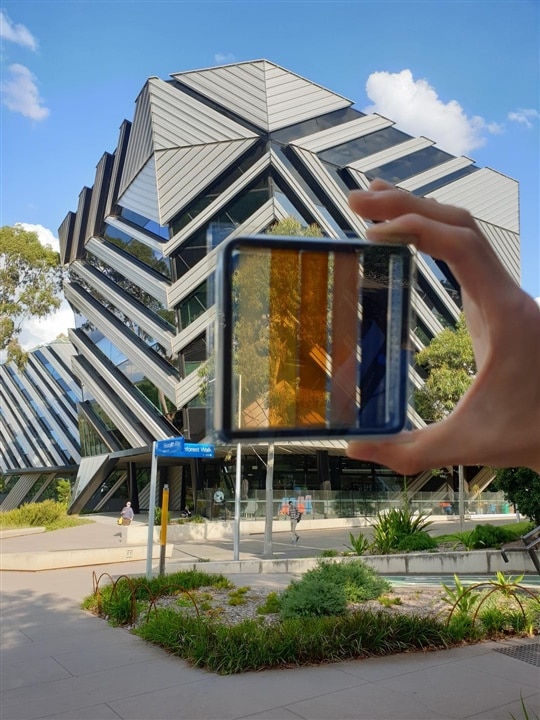
Semi-transparent solar cells could find their way into real-world applications. (Image Credit: Dr. Jae Choul Yu)
Solar panel windows are now inching closer to reality. Researchers at the ARC Center of Excellence in Exciton Science recently developed perovskite cells that exhibit 15.5% conversion efficiency, which also means that over 20% of visible light passes through the cells. As a result, solar windows can become more stable, allowing them to be deployed in various applications.
Previously, researchers created semi-transparent perovskite solar cells with 17% power conversion efficiency that allowed 10% of visible light to pass through. In comparison, rooftop silicon cells have approximately 20% conversion efficiency. That team also created perovskite cells with a caesium and formamidinium combination. This led to 15.5% and 4.1% conversion efficiencies with 20.7% and 52.4% average visible transmittance.
Those power conversion numbers aren’t as bad as one might think because the amount of natural light passing through compensates for that downside. “This work provides a major step forward towards realizing high efficiency and stable perovskite devices that can be deployed as solar windows to fulfill what is a largely untapped market opportunity,” said Monash University’s Professor Jacek Jasieniak.
While undergoing consistent heating and light tests, the semi-transparent caesium and formamidinium perovskite solar cells exhibited long-term stability. After around 1,000 hours of constant light exposure, the solar cells retained 85% of their power conversion efficiency, which means they could be scaled for manufactured devices.
Transparent solar cells collect and use light energy through windows, which can contribute to more solar expansions. Researchers developed transparent solar technology techniques in the past. Most of these capture UV and infrared light wavelengths, transforming them into electricity for electronics. This is also called photovoltaic glass, which produces varying transparency levels. Even better, transparent solar technologies are starting to become more popular.
The Copenhagen International School uses a design that integrates 12,000 hued and clear solar panels across the building, producing 200 MWh of electricity per year.
Have a story tip? Message me at: http://twitter.com/Cabe_Atwell

